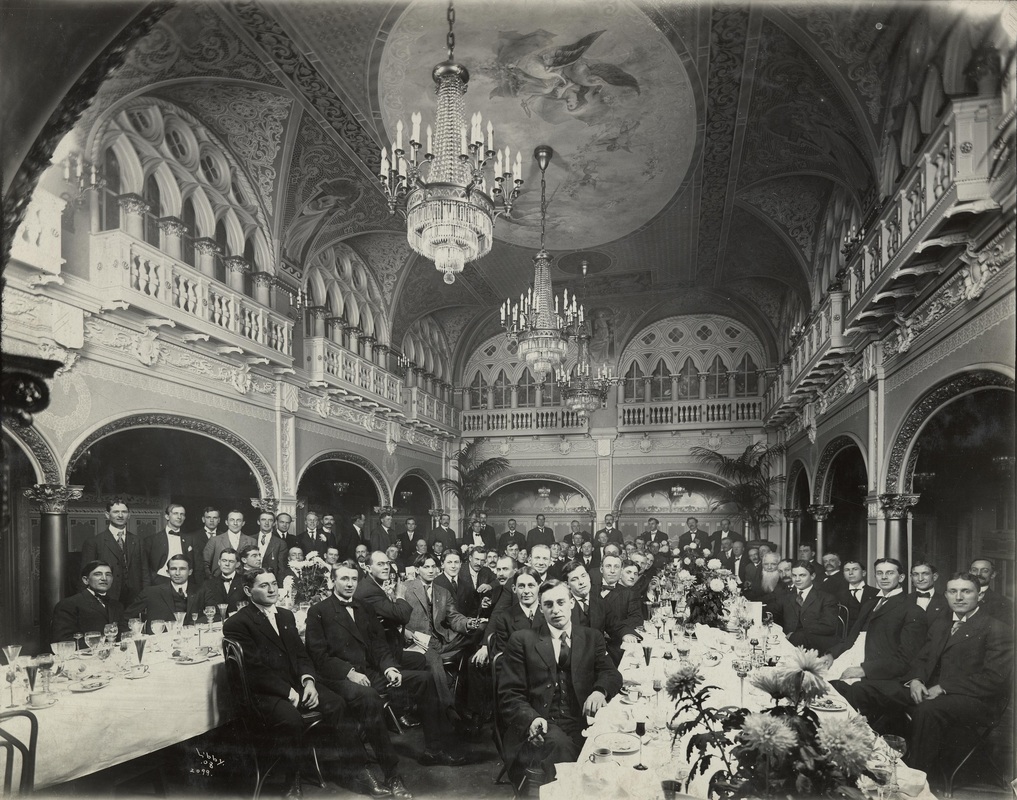|
J. William T. "Bill" Youngs, The Fair and the Falls: Spokane’s Expo ’74: Transforming an American Environment, Chapter Six
|
"Middle Falls of the Spokane River" courtesy of the Library of Congress
|
Chapter Six: The Twilight of Old Spokane
|
SummaryMany Spokanites remember the city's vibrant downtown as it existed in the 1930s and '40s. Theaters, restaurants, shops, taverns, and other attractions made downtown Spokane the place to be. While the city continued to prosper, the river had been almost completely forgotten; so much so that the annual Sportman's Show, which celebrated nature and outdoor recreation, was held under train trestles away from the river and utilized fake trees and streams for decoration. In contrast, the city's poorest citizens, who by in large congregated in houses, shanties, and camps in Peaceful Valley, kept their connection to the river by living along its banks.
|
Author reads from the Text
"Going downtown was an adventure"
Former congressman Tom Foley remembered that in his youth, Spokane "had this identifiable, clear, dynamic center of business, entertainment, finance, information, which was the downtown core. And it gave the city its identity."
"Foley also remembered Spokane as a great town for a kid to eat. Johnston's Coffee Shop was 'a wonderful place that sold coffee and bread and had a marvelous lunch counter.' He liked a little restaurant next to the Bandbox Theater called the Model Cafe and Bakery; it was about five feet wide by thirty feet long -- 'just enough room for a counter, space to work behind the counter, and maybe twenty or twenty-five seats.' They baked their own pies and cakes and were 'famous for these huge, marvelous cakes. For kids there was this endless round of theaters and wonderful restaurants. Going downtown was an adventure.'"
"Foley also remembered Spokane as a great town for a kid to eat. Johnston's Coffee Shop was 'a wonderful place that sold coffee and bread and had a marvelous lunch counter.' He liked a little restaurant next to the Bandbox Theater called the Model Cafe and Bakery; it was about five feet wide by thirty feet long -- 'just enough room for a counter, space to work behind the counter, and maybe twenty or twenty-five seats.' They baked their own pies and cakes and were 'famous for these huge, marvelous cakes. For kids there was this endless round of theaters and wonderful restaurants. Going downtown was an adventure.'"
"The 'Chinese Wall'"
"In Spokane's early days, the city and the river were one. From downtown you could hear the roar of the falls. The city's first big hotel, the California, actually overlooked the river. But a half century later, the downtown core stood several blocks back from the falls. Spokane's premier hotel, the Davenport, was located several blocks from the falls. Even on Trent Avenue, which flanked the river, you could easily forget the presence of the falls. Looking north towards Havermale Island from Trent, you saw a forest of iron girders -- hundreds of them -- supporting the Union Pacific tracks. Spokanites sometimes called the trestles the "Chinese Wall," after the Great Wall of China; the tracks separated the city from the falls. Whenever a train crossed above, the girders groaned and vibrated."
"At the Sportman's Show"
"Ironically at the Sportsman's Show --devoted as it was to the outdoors -- no attention was paid to the actual river beside the trestles. The Sportsmen's Show created an artificial nature where, a half century before, wilderness had abounded. "This, then," wrote a reporter, "is your woodland setting, the woods for all the feel of it, but without mosquitoes, ants and bumble bees!" Apparently the quiet waters of the Spokane River's south channel were considered too dirty and too tame to deserve the attention of people assembled to pay homage to an ideal wilderness represented by painted landscapes and artificial forests. The exhibits actually blocked the view of the Spokane River. The real falls that had so enchanted James Glover a few decades before were all but forgotten -- no longer seen with "gazing and wondering and admiring" eyes. While Spokanites gathered to celebrate nature among manmade streams and waterfalls beneath the Union Pacific trestles, the river flowed by a few footsteps away -- unnoticed."

